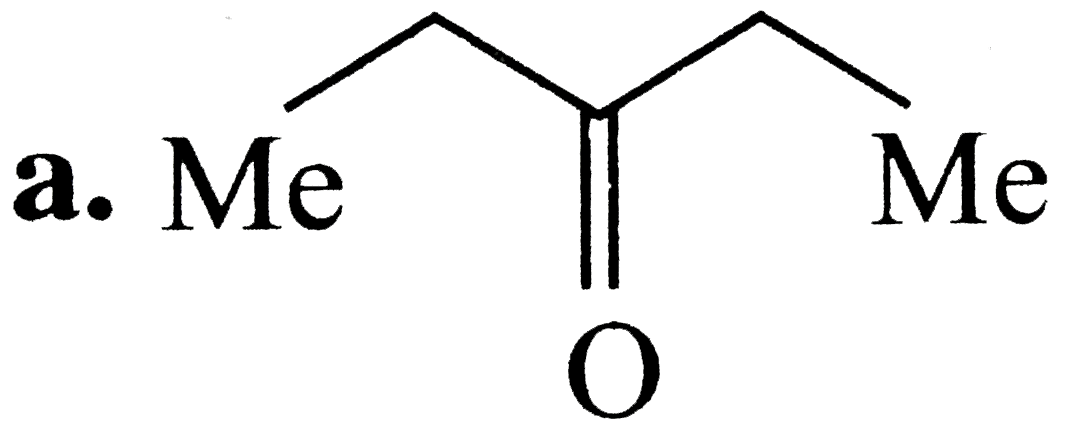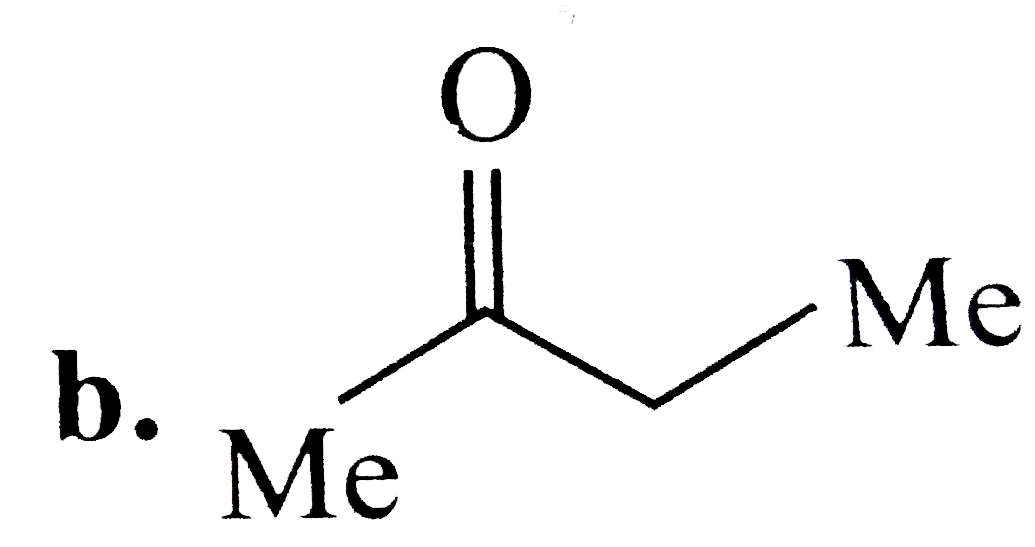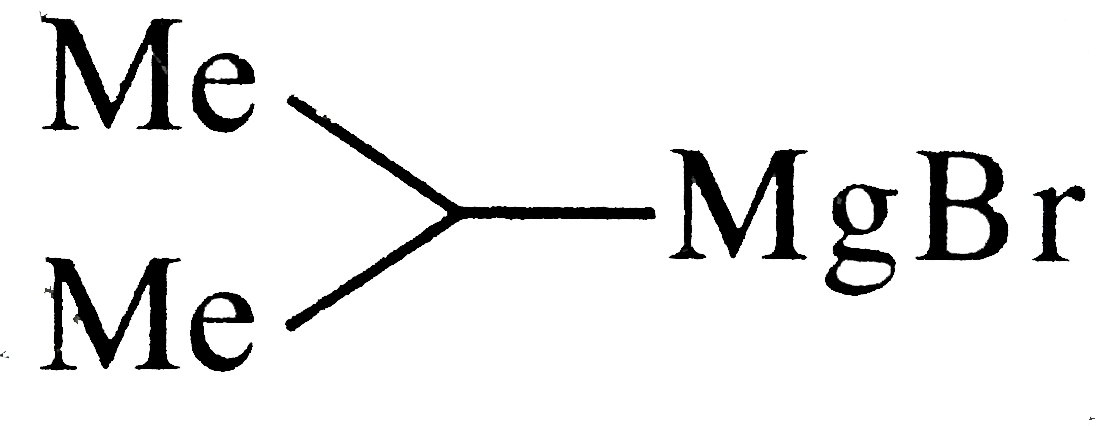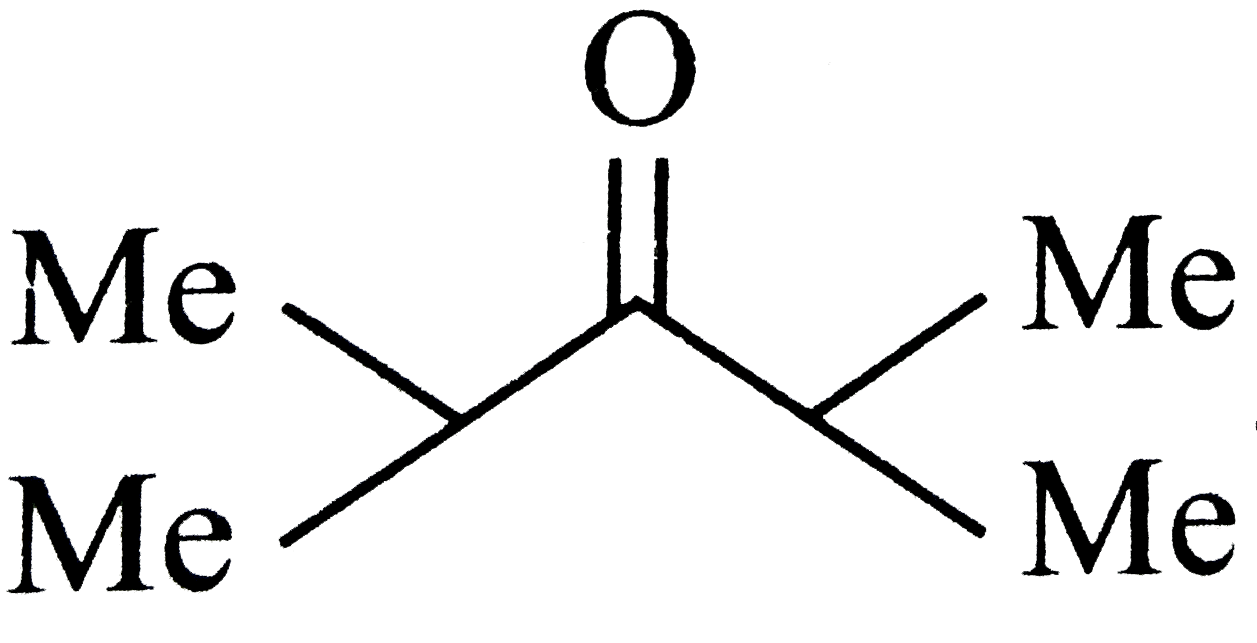When ethanamide is treated with EtMgBr, followed by hydrolysis, the product is :




The correct Answer is:B
To solve the problem of what product is formed when ethanamide is treated with ethyl magnesium bromide (EtMgBr) followed by hydrolysis, we can follow these steps:
Step 1: Identify the Reactants
The reactants in this reaction are:
- Ethanamide (CH3CONH2): This is a two-carbon amide.
- Ethyl magnesium bromide (EtMgBr): This is a Grignard reagent, which contains an ethyl group (C2H5) bonded to magnesium bromide.
Step 2: Understand the Grignard Reaction
Grignard reagents react with carbonyl compounds (like amides) to form an intermediate. In this case, the carbonyl carbon of ethanamide will react with the ethyl group from the Grignard reagent.
Step 3: Reaction Mechanism
1. The carbonyl carbon in ethanamide (C=O) is electrophilic and will react with the nucleophilic ethyl group from EtMgBr.
2. The nucleophilic attack leads to the formation of a tetrahedral intermediate. The carbonyl oxygen becomes negatively charged (alkoxide ion), and the nitrogen remains attached to the carbon chain.
The reaction can be represented as:
CH3C(O)NH2+EtMgBr→CH3C(OH)(C_2H_5)NH2
Step 4: Hydrolysis of the Intermediate
After the formation of the intermediate, hydrolysis is performed. Hydrolysis involves adding water, which will protonate the alkoxide oxygen and convert the nitrogen into an amine.
The hydrolysis of the intermediate leads to:
CH3C(OH)(C_2H_5)NH2+H2O→CH3C(OH)(C_2H_5)+NH2H
Step 5: Identify the Final Product
The final product after hydrolysis is 2-butanol (CH3-CH(OH)-C2H5), which is a four-carbon alcohol.
Final Answer
The product formed when ethanamide is treated with ethyl magnesium bromide followed by hydrolysis is 2-butanol.
---
The reactants in this reaction are:
- Ethanamide (CH3CONH2): This is a two-carbon amide.
- Ethyl magnesium bromide (EtMgBr): This is a Grignard reagent, which contains an ethyl group (C2H5) bonded to magnesium bromide.
Grignard reagents react with carbonyl compounds (like amides) to form an intermediate. In this case, the carbonyl carbon of ethanamide will react with the ethyl group from the Grignard reagent.
1. The carbonyl carbon in ethanamide (C=O) is electrophilic and will react with the nucleophilic ethyl group from EtMgBr.
2. The nucleophilic attack leads to the formation of a tetrahedral intermediate. The carbonyl oxygen becomes negatively charged (alkoxide ion), and the nitrogen remains attached to the carbon chain.
CH3C(O)NH2+EtMgBr→CH3C(OH)(C_2H_5)NH2
After the formation of the intermediate, hydrolysis is performed. Hydrolysis involves adding water, which will protonate the alkoxide oxygen and convert the nitrogen into an amine.
CH3C(OH)(C_2H_5)NH2+H2O→CH3C(OH)(C_2H_5)+NH2H
The final product after hydrolysis is 2-butanol (CH3-CH(OH)-C2H5), which is a four-carbon alcohol.
The product formed when ethanamide is treated with ethyl magnesium bromide followed by hydrolysis is 2-butanol.
Topper's Solved these Questions
- GRIGNARD REAGENTS AND ORGANOMETALLIC REAGENTSBOOK - CENGAGE CHEMISTRY ENGLISHCHAPTER - GRIGNARD REAGENTS AND ORGANOMETALLIC REAGENTSEXERCISE - Exercises Archives (Single Correct)
4 Videos
- GRIGNARD REAGENTS AND ORGANOMETALLIC REAGENTSBOOK - CENGAGE CHEMISTRY ENGLISHCHAPTER - GRIGNARD REAGENTS AND ORGANOMETALLIC REAGENTSEXERCISE - Exercises Archives (True/False)
1 Videos
- GRIGNARD REAGENTS AND ORGANOMETALLIC REAGENTSBOOK - CENGAGE CHEMISTRY ENGLISHCHAPTER - GRIGNARD REAGENTS AND ORGANOMETALLIC REAGENTSEXERCISE - Exercises (Multiple Correct)
16 Videos
- GENERAL PRINCIPLES AND PROCESS OF ISOLATION OF ELEMENTSBOOK - CENGAGE CHEMISTRY ENGLISHCHAPTER - GENERAL PRINCIPLES AND PROCESS OF ISOLATION OF ELEMENTSEXERCISE - Archives (Subjective)
14 Videos
- NCERT BASED EXERCISEBOOK - CENGAGE CHEMISTRY ENGLISHCHAPTER - NCERT BASED EXERCISEEXERCISE - Nuclear Chemistry (NCERT Exercise)
29 Videos
Similar Questions
Knowledge Check
When acetaldehyde is treated with Grignard reagent, followed by hydrolysis the product formed is :
Aprimary alcoholBsecondary alcoholCcarboxylic acidDtertiary alcoholWhen acetaldehyde is treated with Grignard reagent, followed by hydrolysis the product formed is :
Aprimary alcoholBsecondary alcoholCcarboxylic acidDtertiary alcoholWhen acetaldehyde is treated with Grignard reagent, followed by hydrolysis the product formed is :
Aprimary alcoholBsecondary alcoholCcarboxylic acidDtertiary alcohol
When ethane nitrile is treated with C2H5MgBr, followed by hydrolysis, the product is :
View SolutionWhen ethyl ethanoate is treated with excess of MeMgBr, followed by hydrolysis, the product is :
View SolutionA long solenoid having n = 200 turns per metre has a circular cross-section of radius a1=1cm. A circular conducting loop of radius a2=4cm and resistance R=5(Ω) encircles the solenoid such that the centre of circular loop coincides with the midpoint of the axial line of the solenoid and they have the same axis as shown in Fig.

A current 't' in the solenoid results in magnetic field along its axis with magnitude B=(μ)ni at points well inside the solenoid on its axis. We can neglect the insignificant field outside the solenoid. This results in a magnetic flux (ϕ)B through the circular loop. If the current in the winding of solenoid is changed, it will also change the magnetic field B=(μ)0ni and hence also the magnetic flux through the circular loop. Obvisouly, it will result in an induced emf or induced electric field in the circular loop and an induced current will appear in the loop. Let current in the winding of solenoid be reduced at a rate of 75A/sec.
When the current in the solenoid becomes zero so that external magnetic field for the loop stops changing, current in the loop will follow a differenctial equation given by [You may use an approximation that field at all points in the area of loop is the same as at the centre
View SolutionWhen acetaldehyde is treated with Grignard reagent, followed by hydrolysis the product formed is :
View SolutionSelect the correct alternative from the choices given:
When acetone is treated with Grignard's reagent, followed by hydrolysis, the product formed is :
View Solution

 is treated with
is treated with  is treated with
is treated with  followed by hydrolysis, the product is :
followed by hydrolysis, the product is :